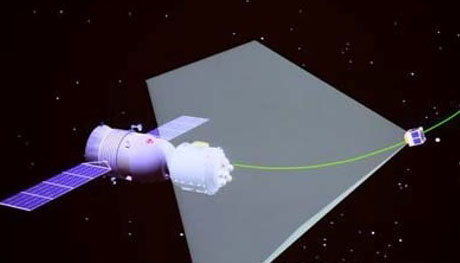FPI / January 5, 2022
Geostrategy-Direct
By Richard Fisher
On Dec. 3, 2021, China complained to the United Nations that on July 1 and Oct. 21, 2021, satellites of the United States SpaceX Corporation’s Starlink Internet-satellite constellation came close to China’s Tiangong space station, forcing at least one avoidance maneuver.

China’s complaint, however, may end up providing an excuse for China to equip Tiangong and future Chinese space stations with defensive and offensive military capabilities, all consistent with a People’s Liberation Army (PLA) controlled space program that produces military “dual-use” benefits for the PLA.
Significantly, China’s complaint exposes a glaring double standard on China’s part: It is China that has become the source of the largest space debris cloud in Low Earth Orbit that has forced the International Space Station to conduct serious evasive maneuvers at least twice, most recently on Nov. 10.
On Jan. 11, 2007, China conducted the 5th and first successful test of its ground-based anti-satellite (ASAT) interceptor, destroying a non-working Fengyun weather satellite and creating an orbital cloud of over 3,500 pieces large enough to be tracked by radar on Earth.
Most recently on Nov. 10, 2021, the ISS had to maneuver to avoid a piece of Chinese space debris from the 2007 ASAT test, forcing the crew of seven, from Russia, the United States and Germany, to take emergency refuge in landing capsules as the chance of a collision was that high.
At orbital velocities of 17,000 miles per hour, a piece of Chinese space debris the size of a nickel could punch a hole in the ISS.
But the chances are very high that China regarded the Starlink near misses through the lens of its own Sept. 27, 2008 deliberate near miss of the ISS by its Shenzhou-8 spacecraft.
Better known for having conducted China’s first manned space walk, soon after that event, Shenzhou-7 launched its 40-kilogram BX-1 microsatellite as it passed within 45 kilometers (27 miles) of the ISS.
Full Text . . . . Current Edition . . . . Subscription Information
Free Press International News Service
